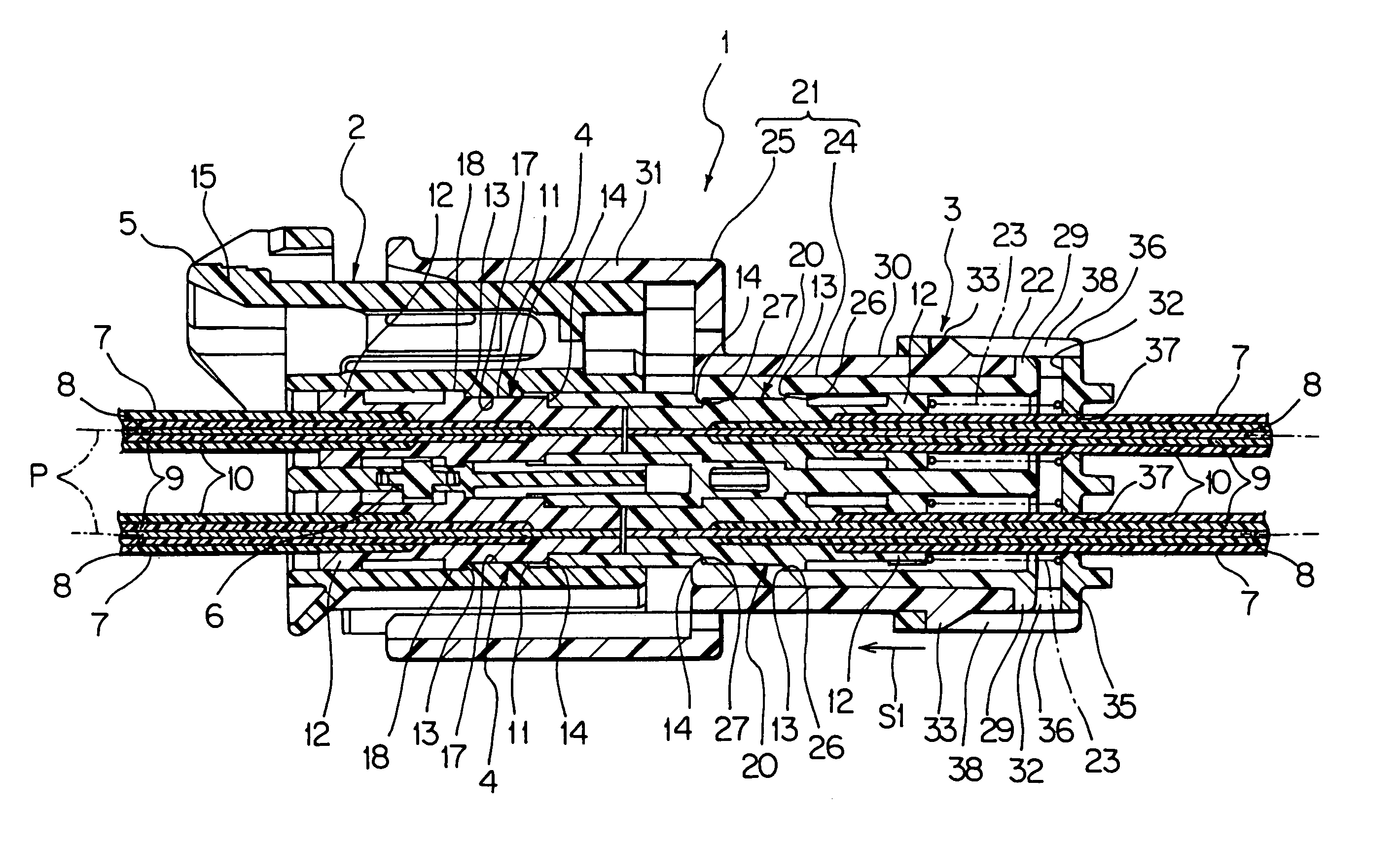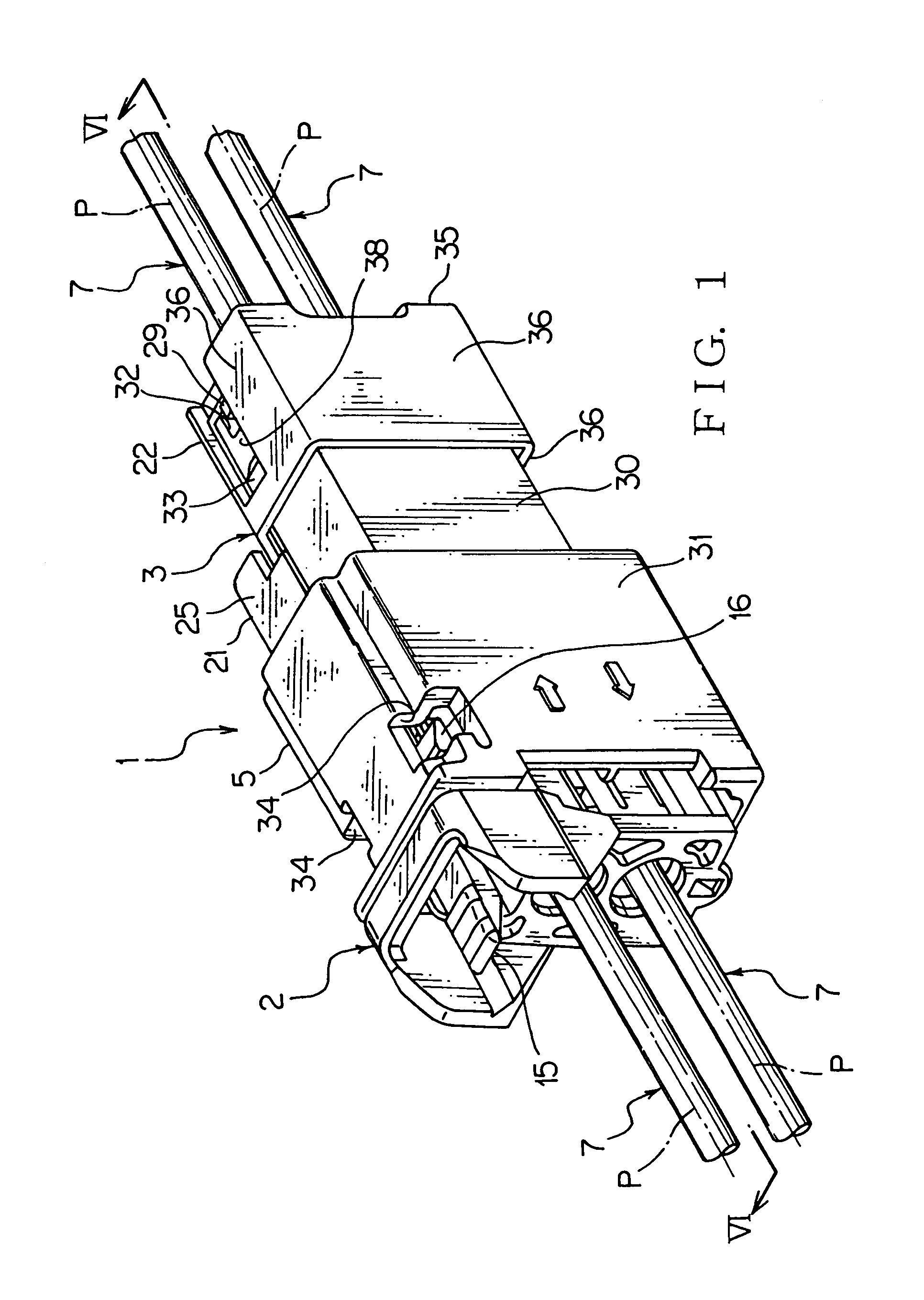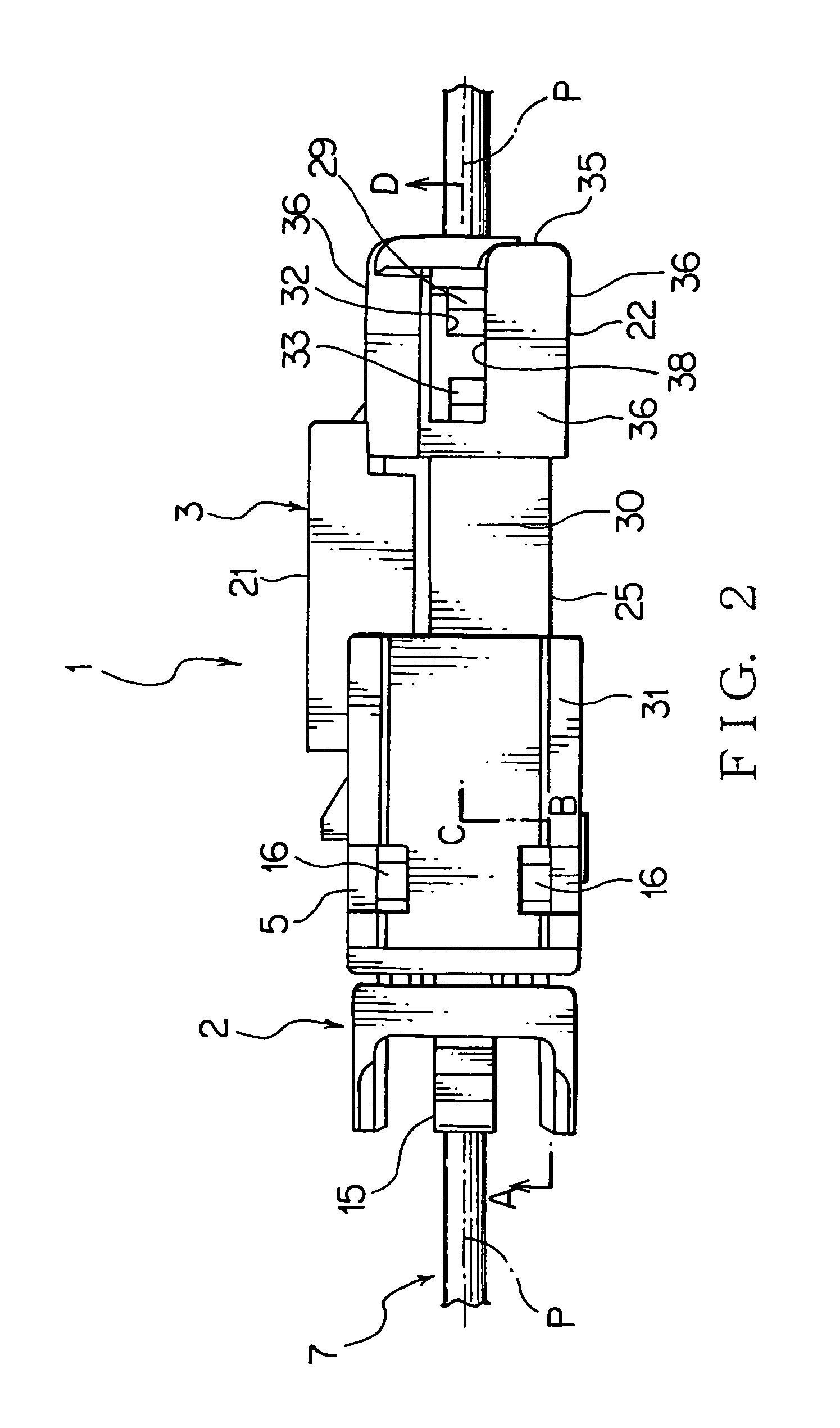Optical connector
a technology of optical connectors and housings, applied in the field of optical connectors, can solve the problems of increasing noise, increasing time and labor, and difficulty in combining the first housing and the second housing with each other, so as to reduce time and labor and facilitate the insertion of the housing
- Summary
- Abstract
- Description
- Claims
- Application Information
AI Technical Summary
Benefits of technology
Problems solved by technology
Method used
Image
Examples
Embodiment Construction
[0036]Now referring to FIGS. 1 to 10, an explanation will be given of an optical connector according to an embodiment of this invention. An optical connector 1 according to the embodiment, as shown in FIGS. 1 to 10, a first connector 2 and a second connector 3 which can be freely coupled and decoupled.
[0037]The above optical connector 1 transmits an optical signal in such a manner that the first connector and the second connector are coupled.
[0038]The first connector 2, as shown in FIGS. 3, 5 to 10, includes a pair of first ferrules 4, a first housing 5 and a spacer 6 (FIGS. 3 and 6 to 10). Each of the first ferrules 4 is provided with an optical fiber cable 7. The optical fiber cable 7, as shown in FIG. 3, includes an optical fiber 8, a first sheath 9 and a second sheath 10. The optical fiber 8 is a well known multi-mode plastic fiber composed of a core and cladding which are formed to have different refraction indices and arranged coaxially.
[0039]The first and the second sheaths 9...
PUM
 Login to View More
Login to View More Abstract
Description
Claims
Application Information
 Login to View More
Login to View More - R&D
- Intellectual Property
- Life Sciences
- Materials
- Tech Scout
- Unparalleled Data Quality
- Higher Quality Content
- 60% Fewer Hallucinations
Browse by: Latest US Patents, China's latest patents, Technical Efficacy Thesaurus, Application Domain, Technology Topic, Popular Technical Reports.
© 2025 PatSnap. All rights reserved.Legal|Privacy policy|Modern Slavery Act Transparency Statement|Sitemap|About US| Contact US: help@patsnap.com



